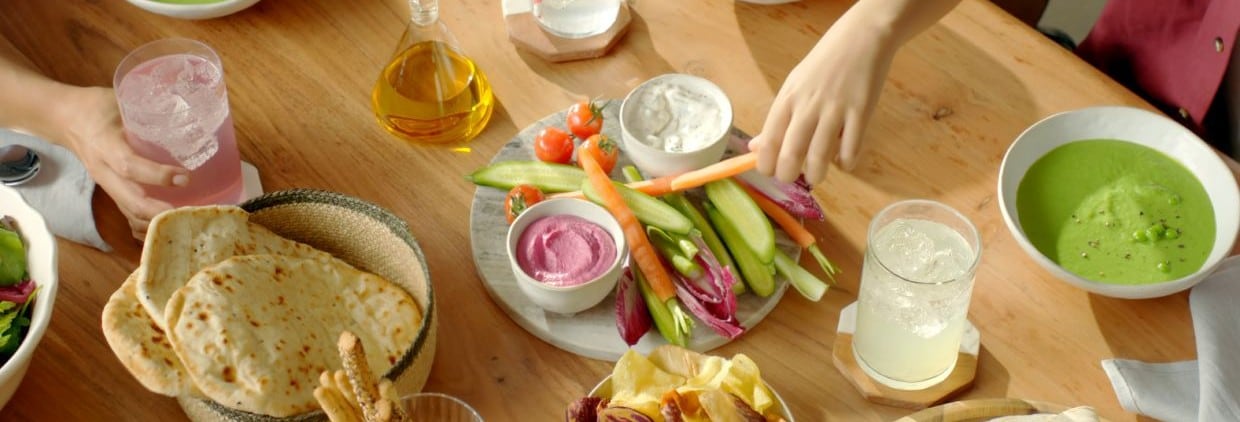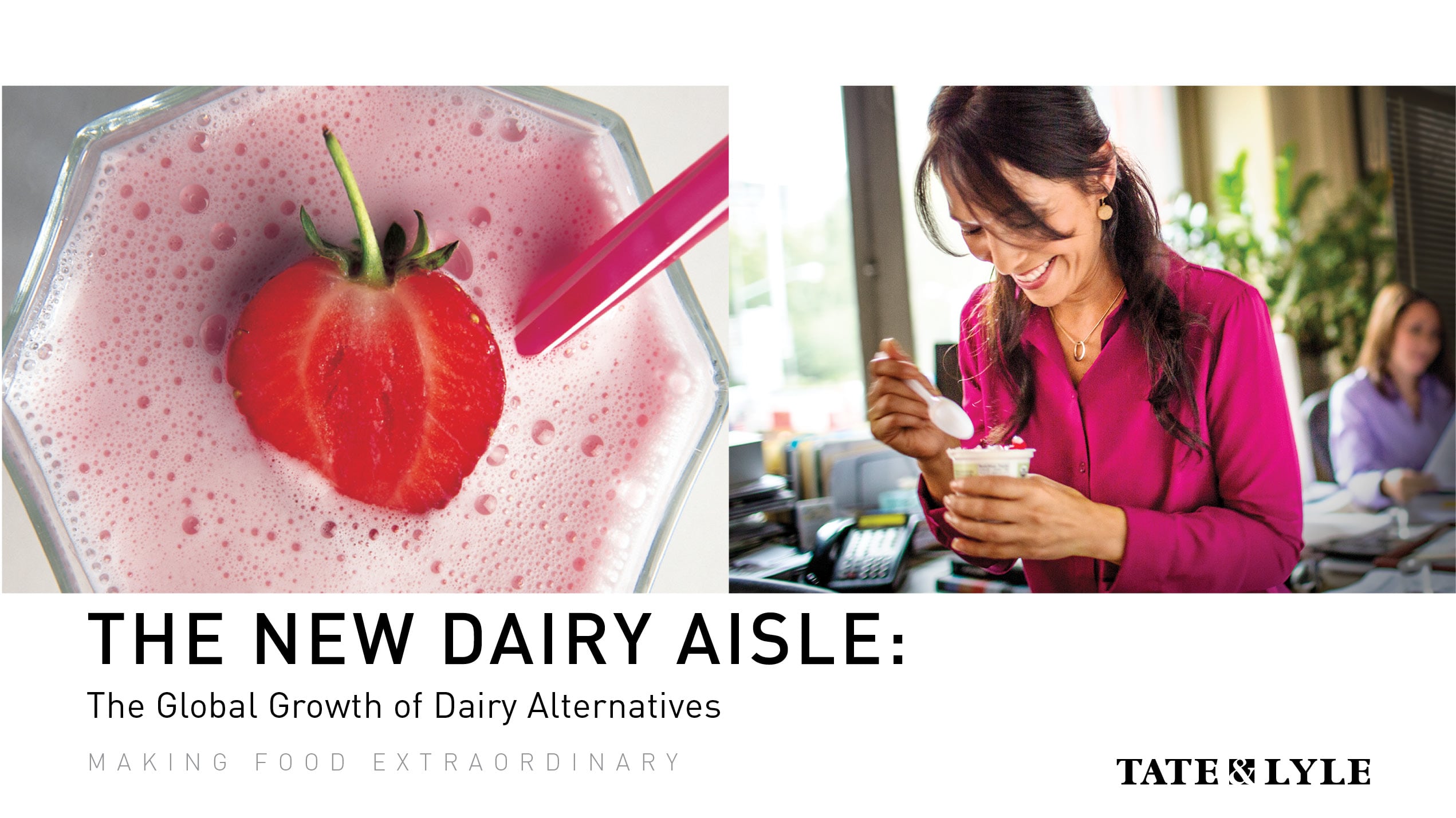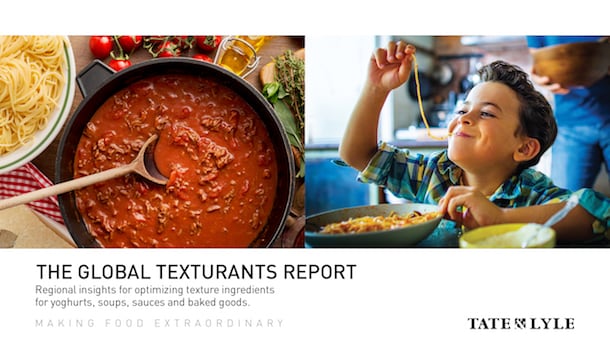Across Europe, people are rethinking what makes food worth buying.
Shoppers are scrutinising ingredient lists more closely, looking for simple, recognisable components and fewer additives. At the same time, rising living costs are reshaping how value is judged. Price still matters, but quality and trust carry more weight, especially when a product feels better for you. Natural ingredients signal quality to consumers – in fact, according to Tate & Lyle’s Clean Label Digest, more than two-thirds judge products this way.¹
This shift is especially clear in indulgent categories like dairy desserts, yoghurts, sauces and ready meals. Flavour and texture remain essential, but how they’re delivered is evolving. Consumers, particularly millennials and Gen Z, are drawn to foods that feel less processed. In fact, recent research across the UK and Germany shows more than two-thirds of younger consumers would pay more for food and drink with cleaner labels.¹
For manufacturers, that opens the door to innovation, but it also raises challenges. Modified starches have long been essential for delivering consistency and mouthfeel in tough processing conditions. Replacing them isn’t a straightforward switch – it requires deeper technical reformulation to preserve the eating experience.
Tate & Lyle helps brands solve this challenge with science-led solutions like CLARIA® Functional Clean Label Starches, developed to deliver the performance of modified starches while labelling simply as ‘starch’ or ‘tapioca starch’ depending on the origin.
What does clean label really mean today?
The term ‘clean label’ may lack a formal definition, but consumers know exactly what they want. Short, recognisable ingredient lists that signal health, safety and transparency. At the same time, taste hasn’t lost its top spot. In indulgent categories where texture defines the experience, brands face a clear challenge: delivering the same sensory pleasure with fewer, simpler ingredients.
Since the pandemic, health and wellbeing have remained top of mind, for example Tate & Lyle’s clean label research shows people are thinking more carefully about how their diet can support a healthier lifestyle. At the same time, perceived value is now judged as much by ingredients and benefits as it is by cost.
When asked what makes food worth its price, consumers often cite natural ingredients and health credentials. So, if flavour or mouthfeel fall short, loyalty can quickly fade.
The balancing act of reformulating for clean label
Clean label reformulation in indulgent formats is rarely straightforward. Modified starches have long delivered reliable performance under pressure as they thicken, stabilise and create the textures consumers expect, even during high heat or acidity.
Replacing them with ingredients that have simpler declarations like ‘starch’ or ‘tapioca starch’ may meet clean label goals, but it cannot jeopardise performance. Choosing the right substitute ingredient is what will stop a creamy spoonful turning grainy, a smooth pour becoming gloopy or shelf life becoming unpredictable – ruining the eating experience consumers expect.
That’s why a cleaner label on its own isn’t enough. Successful reformulation demands technical insight, sensory expertise and careful adjustment of both recipe and process to protect the full eating experience.
CLARIA Functional Clean-Label Starches were designed to solve this challenge and perform under challenging conditions, from pasteurisation to high-shear, helping manufacturers retain the creamy texture, process stability and shelf-life consumers expect, while simplifying ingredient lists with recognisable declarations.
Maintaining a velvety spoonful in dairy desserts
Dairy and dairy alternative desserts, including custards and puddings, face growing scrutiny. Consumers perceive them as indulgent and are willing to pay more if the ingredients look natural and simple. But maintaining creaminess and smooth pourability while shortening the label is no mean feat.
When a premium dairy alternative brand set out to remove ‘modified starch’ from its custard, the team faced a familiar challenge: how to keep that rich, velvety spoonful consumers love without compromising shelf life.
In the Tate & Lyle labs and pilot plants, scientists worked side by side with the brand’s developers, trialling different clean label starches until a breakthrough batch hit the perfect texture. The answer was CLARIA Essential – a clean label starch with just the right balance of process tolerance and creaminess to deliver indulgence, naturally.
Managing viscosity and mouthfeel in sauces and dressings
In the sauces category, reformulation can be especially demanding. High acidity, heat and shear conditions often mean modified starches are used to manage viscosity and mouthfeel. One European brand looking to premiumize its sauce range turned to CLARIA Elite, a clean label starch designed to perform under these challenging conditions.
Together with Tate & Lyle’s technical experts, the customer identified and tested suitable starches, adjusted processing parameters, and validated sensory performance through trials. The result: a creamy, glossy sauce with robust shelf life and consumer-friendly labelling.
Delivering starches for a wide range of applications
The CLARIA range offers solutions for different reformulation challenges – whether the goal is to simplify labels, protect texture or extend shelf life. For example, CLARIA Elite is built to withstand high-shear, high-acid processes common in sauces and dressings, while CLARIA EVERLAST supports freeze-thaw stability in chilled and frozen formats like custards or dairy alternatives.
Where no-heat processing is needed, CLARIA Instant delivers viscosity without cooking. Across the range, each starch is designed to perform reliably while offering a clean flavour, neutral colour and recognisable labelling.
All of these solutions are derived from responsibly sourced crops like corn, offering cleaner labels and supporting broader sustainability goals. Efficient, sustainable production adds another layer of trust and reassurance.
At its Koog aan de Zaan facility, Tate & Lyle has reduced the product line’s carbon footprint by 34% and water use in CLARIA starch production by 35% – a tangible step towards more responsible manufacturing.1
Clean label products built with responsibly sourced and efficiently manufactured inputs can help brands strengthen both consumer trust and corporate responsibility credentials.
Beyond the ingredient list
Today’s clean label conversation is about more than what’s removed, it’s about what’s preserved: texture, taste and consumer trust. Mouthfeel remains one of the strongest signals of product quality, especially in indulgent categories. If it feels right, consumers return. If it doesn’t, they look elsewhere.
That’s why Tate & Lyle support its partners at every step, from identifying the right clean label ingredient to testing and trial, all the way through to full-scale production.
With the rise of transparency tools, from mobile apps to smart packaging, the pressure to simplify and explain will only grow. But so will the opportunity. Brands that reformulate for clean label today are positioning themselves for long-term relevance, differentiation and loyalty.
What’s next for clean label?
Clean label expectations will continue to rise as technology makes product information more accessible. Smartphone apps already let shoppers scan barcodes to see additives and nutritional profiles, with wearables and AI likely to accelerate this trend.
For manufacturers, the journey to cleaner labels begins with understanding consumer drivers – health, naturalness and value, as well as identifying where products can simplify ingredients without compromising sensory appeal.
Functional clean label starches, developed specifically to perform like their modified counterparts, now make it possible to maintain stability and mouthfeel while offering simpler labels. When combined with sensory science and process know-how, these solutions let brands meet the demand for transparency without sacrificing the eating experience that drives loyalty.
The opportunity ahead
Clean label is no longer a niche trend – it is the new baseline for food and drink innovation. Shoppers are willing to reward brands that provide transparency, naturalness and quality, but they will not compromise on taste or experience. When clean label meets creamy texture and robust stability, it becomes a competitive advantage.
With CLARIA functional clean label starches, brands can protect the texture, stability and mouthfeel that consumers love, while offering simpler, more trusted ingredient lists.
Brands that understand their market choose smart ingredients and get the right technical support will win with today’s shoppers.
References
- 1. Tate & Lyle. Clean Label Digest 2025.








